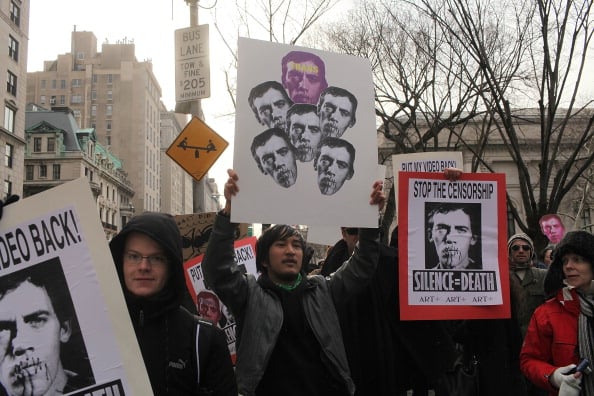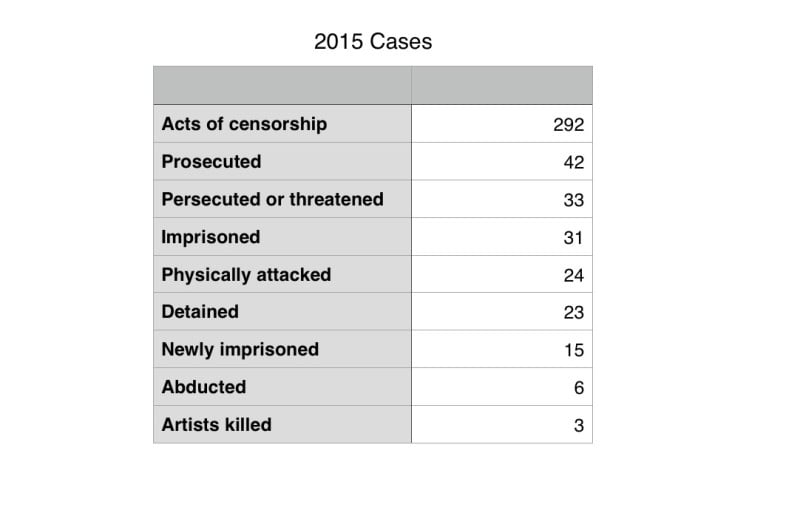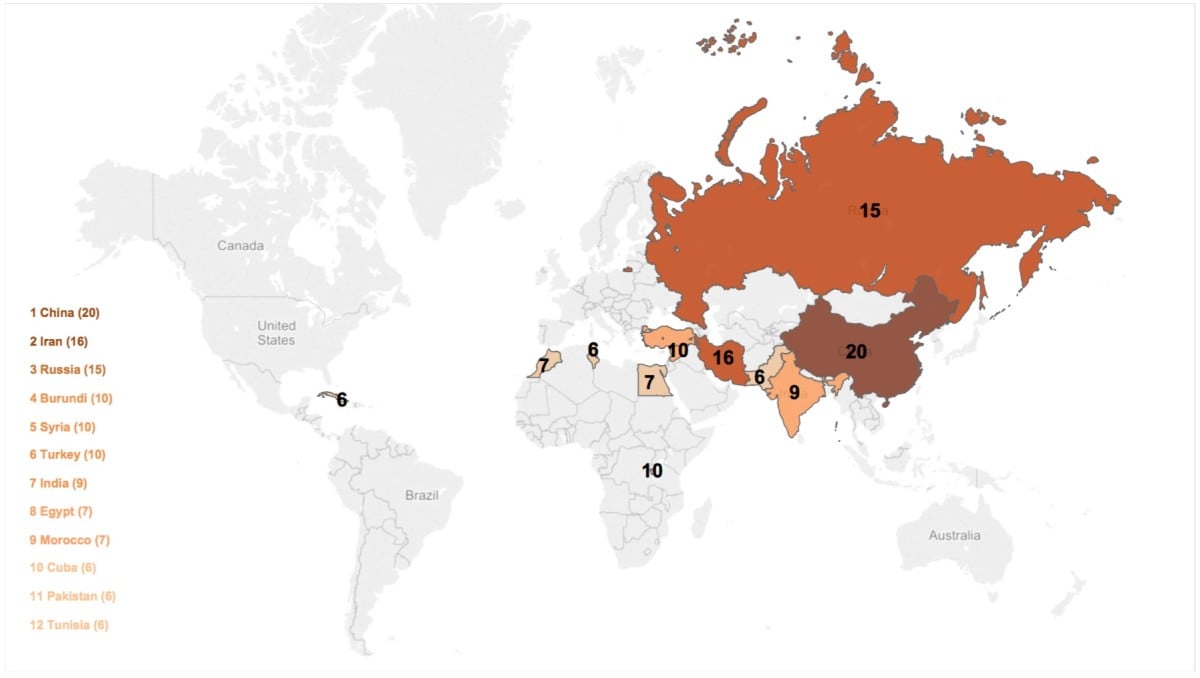Law & Politics
Report Shows Arts Censorship Reached Unprecedented Levels in 2015
Democratic countries are implicated.

Democratic countries are implicated.

Henri Neuendorf

A new report on artistic freedom by the Danish free speech advocacy group Freemuse has found that global censorship and threats on artistic freedom increased significantly in 2015, according to the Art Newspaper.
The report, which analyzes artistic freedom in over 70 countries, gathered data from media sources as well as partner organizations, such as the Copenhagen-based civil society network Artsfex. The findings show a 20 percent increase in registered killings, attacks, abductions, imprisonments, and threats related to artists worldwide, as well as a 224 percent increase in acts of censorship.
Freemuse registered a total 469 cases of censorship and attacks on artists in 2015, the worst year on record. The increase constitutes double the number of cases from 2014, where 237 cases were registered.

The graph depicts the number of arts freedom violations by category.
Data: Freemuse Art Under Threat Report
According to the report the increase “can partially be explained by the fact that Freemuse and its collaborating partners have improved their documentation methods and strengthened their networks,” and that “artistic freedom is an issue that is slowly gaining larger attention.”
However the report notes that “artistic freedom violations continue to be under-reported in many countries due to lack of awareness, registration, political will, and reporting accuracy.”
China led overall artistic freedom violations in 2015, tallying 146 overall incidents, and also topped the list of “serious violations”—which exclude censorship—with 20 registered incidents. Other serious offenders include Iran, with 16 incidents; Russia, with 15; and Burundi, Syria, and Turkey with 10 each.

Top 10 countries: registered serious violations of artistic freedom in 2015; killings, abductions, attacks, threats and imprisonment.
Graph: Freemuse Art Under Threat Report.
While totalitarian countries recorded the highest incidents of artistic freedom violations, democratic countries were also implicated in the report. The United States recorded eight instances of censorship and one prosecution in 2015; the United Kingdom recorded six instances of arts censorship; and in Germany one physical attack on an artist was recorded.
According to Freemuse, musicians suffered the greatest artistic freedom violations (223), followed by filmmakers (39), and writers (26). Visual arts had 13 recorded violations. Dancers and “multiple art forms” make up the remaining recorded instances.
In terms of drivers of artistic freedom violations, the report cites politically motivated attacks and religious extremism.
“Art continues to address important, controversial issues,” Ole Reitov, executive director of Freemuse told artnet News in an email. “In a way censorship of the arts is a barometer of political, cultural and religious and social conflicts within societies and many societies are going through value based identity crisis at the moment. Artistic expressions are easy to target. Much easier than targeting the real problems.”